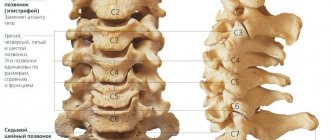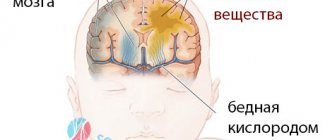Aggression
Increased aggressiveness in children is one of the most pressing problems not only for doctors, teachers and psychologists, but also for society as a whole. The number of children with this behavior has unfortunately been growing recently. It is especially important to help preschoolers whose aggressiveness is only in its infancy.
No other behavior irritates adults and maladjusts children as much as aggressive behavior. This is one of the few conditions when parents try to bring their child to a specialist as early as possible. Aggression manifests itself in a wide range from harsh statements to physical actions, representing that rare case when an aggressive child, instead of sympathy, causes general irritation and often retaliatory aggression from adults.
Based on numerous studies, it should be accepted that aggression is biologically inherent in humans. This is a mechanism that allowed man in very ancient times to survive among more adapted and stronger animals. Subsequently, having solved these problems, aggression did not disappear, but as man developed and society formed, it came under the control of social norms and functions.
In a structured form, aggression manifests itself in the form of aggressive behavior or aggressive actions. This is one of the forms of response to various unfavorable physical and psychological life situations.
The main causes of child aggression are:
- desire to attract the attention of adults and peers;
- the desire to get the desired result;
- the desire to be in charge;
- protection and revenge;
- the desire to infringe on the dignity of another in order to emphasize one’s superiority.
Among the psychological characteristics that provoke aggressive behavior in children, the following are usually identified:
- insufficient development of intelligence and communication skills;
- reduced level of self-regulation;
- underdevelopment of gaming activities;
- decreased self-esteem;
- disturbances in relationships with adults and peers;
- increased excitability of the nervous system due to various reasons (trauma, illness).
One of the most common mistakes of adults is the desire to suppress all manifestations of children's aggressiveness. Unfortunately, this is not only completely wrong, but even dangerous: suppressed aggression does not disappear, but accumulates in the child’s “Unconscious”. One day it breaks out in the form of a violent explosion, and usually goes to innocent people. At the same time, children's aggression causes counter-aggression in adults and peers and a vicious circle is formed, from which participants often cannot get out without the help of a specialist.
To overcome the existing problem, it is necessary to organize individual psychocorrection work, which is aimed at:
- identifying the causes of a child’s aggressive behavior;
- achieving an emotional response to aggression;
- eliminating response stereotypes, increasing self-esteem, accepting oneself and others;
- practicing communication skills in possible conflict situations (behavior correction);
- consolidation of new behavioral stereotypes in real life.
The most effective method of overcoming aggressive behavior in children is the sand therapy method. Playing with sand always arouses genuine interest in a child of any age. It allows the psychologist to quickly establish contact with the little client. The child erects his own miniature image of the world on the sand, thereby telling about himself without words. By analyzing the sand picture and the child’s story, a psychologist can diagnose the reasons for the child’s aggressive behavior without traumatic questions for him. Achieving an emotional response to aggression occurs in the sand with the help of depicting various battle scenes (playing with soldiers, medieval knights, cowboys, various animals). Also, playing with sand gives the most effective results in practicing and consolidating new communication skills, since for preschoolers play is a leading activity that helps them learn how to relate correctly to other people in real life.
At some stages of working with aggressive children, along with sand, drawing is used, which is valuable because it gives children the opportunity to express themselves non-verbally - after all, their verbal (using words) communication system is not yet sufficiently developed. Drawing allows a child to react to his emotions, to throw out aggression on paper, to give free rein to his imagination: after all, what is drawn is, to some extent, what has come true.
An equally effective way to express anger is to work with clay, whose flexibility and pliability make it suitable for meeting a wide variety of needs. Children who are very angry may vent their frustration in a variety of ways. For example, make a figurine of someone they are very angry with, and then break it. This type of creativity is one of the most visual of all types of art, which allows the psychologist to observe the child’s condition, which is quite important when working with any problem.
Diagnosis of mental retardation
To determine mental retardation, a comprehensive comprehensive examination of the child is necessary by a psychological, medical, and pedagogical commission (PMPC), which may include: a psychiatrist, educational psychologist, neuropsychologist, speech therapist, defectologist (oligophrenopedagogist), neurologist, pediatrician and other specialists (if necessary).
Specialists carry out differential diagnosis, which includes:
- a thorough examination of the medical history (including the prenatal and postnatal period of development). This will help to identify the primary causes of the violation and understand their nature;
- communication directly with the child (acquaintance, conversation, testing, psychological examination), as a result of which conclusions are drawn about the state of his mental development;
- a conversation with parents, during which it becomes clear in what conditions the child lives and is raised, what is the psychological situation in the family, what kind of relationships are established between family members.
After a comprehensive study of the child’s medical history, the composition of his family, and the social and living conditions of his life, specialists identify the root causes, the degree and nature of the violations, draw up a pedagogical prognosis and a plan for correctional work.
Anxiety
Anxiety is an individual psychological feature that consists of an increased tendency to experience anxiety in a wide variety of life situations, including those that do not encourage this.
It is necessary to distinguish anxiety from anxiety. If anxiety is an episodic manifestation of a child’s restlessness and excitement, then anxiety is a stable state. For example, a child sometimes gets excited before performing at a party - this is anxiety. If anxiety manifests itself constantly, then we can talk about anxiety.
Many psychologists believe that anxiety develops due to the presence of an internal conflict in a child, which can be caused by:
- conflicting demands made by parents, or parents and kindergarten (school);
- inadequate demands (most often excessive);
- negative demands that humiliate the child and put him in a dependent position.
A child’s anxiety largely depends on the level of anxiety of the adults around him. The authoritarian style of parental education in the family also does not contribute to the child’s inner peace.
Anxious children try to keep their problems to themselves. They are characterized by excessive anxiety, and sometimes they are afraid not of the event itself, but of its premonition. They often expect the worst. Children feel helpless and are afraid to play new games and start new activities. They have high demands on themselves and are very self-critical. Their level of self-esteem is low; such children really think that they are worse than others in everything, that they are the ugliest, stupidest, and clumsy.
Working with an anxious child usually takes a long time and is aimed at:
- increased self-esteem;
- teaching the child the ability to manage himself in specific, most worrying situations;
- to relieve muscle tension.
Since anxious children, as a rule, do not openly communicate their problems, it is extremely difficult to identify what is actually bothering the child. In solving this problem, building a sand picture will help, which does not require special skills from the baby, but is simply a game - a natural activity for this age. As a result, the child does not have the feeling that he did something wrong (there is no tension), and the psychologist receives the necessary information about the internal state of the little client. After establishing contact in the sandbox, situations that worry the baby are played out with the help of various figures. In this way, constructive ways of responding are developed, which are then reinforced in real life.
Working with clay allows you to relax, thereby helping to relieve muscle tension. Children who need to improve their self-esteem gain an extraordinary sense of “I” from using this material. This type of creativity is a good way to stimulate verbal expression of feelings in anxious children, who sometimes lack such abilities.
An equally effective way to solve the problem of child anxiety is fairytale therapy. The child, identifying himself with the hero of the fairy tale, as a result of playing his image, learns to resolve the conflict, acquiring new opportunities and abilities for himself.
Causes of mental retardation
- infections suffered by the mother during pregnancy (toxoplasmosis, influenza, rubella, etc.);
- intoxication of a pregnant woman (smoking, alcohol, medications, etc.);
- Rh conflict between mother and child;
- intrauterine infections;
- fetal asphyxia;
- birth injuries;
- heredity;
- social factors (living conditions, upbringing, attention deficit (overprotection), overprotection, violence, unfavorable psychological climate in the family, pedagogical neglect).
Fears
One of the most common reasons why parents turn to a psychologist is the presence of constant intense fears in children. Fear is the fear of something specific. At every age, normative fears are observed, which appear gradually, as a result of the development of the intellectual sphere, imagination, etc. Every child (and adults too) has certain fears. A.I. Zakharov identified them as age-related, i.e. those that accompany the child during a certain period of development. During the transition from one period of development to another in a healthy child, some fears disappear, while others appear. If this does not happen, then anxious and suspicious traits may appear in the character of an already adult person, which will hinder his development.
Thus, if the fears are close to what a baby might be afraid of at his age, then there is no reason to worry. If there are a lot of fears, then you should pay special attention to this child. The presence of numerous fears is a sign of insufficient self-confidence and lack of adequate psychological protection, which all together adversely affects the child’s well-being, creating even greater difficulties in communicating with peers. Our task is to “remove” from the child’s psyche those fears that are already causing harm, reflected in behavior by fearfulness. Fear has one weak point: until the fear is named and told, it seems huge and unbearable to a small person, but as soon as you name the fear out loud, put it into words, it loses almost half of its significance. Parents need to understand that fear indicates the existence of a problem, tension in the little person and, most likely, this cannot be dealt with without professional help.
Working with fears is aimed at:
- establishing the cause of the child’s anxiety;
- relieving emotional stress, developing communication skills;
- developing skills to overcome conflict situations.
Sand is an invaluable assistant in the first stage of working with fears. A small child cannot yet explain what is the cause of his internal anxiety. An older preschooler or younger schoolchild is often uncomfortable admitting that he is afraid of something (“I’m already big...”). By building a sand country and telling stories about its inhabitants, a psychologist can easily determine the cause of a child’s anxiety. And then a fairy tale comes to the rescue, which not only activates imagination, develops memory, enriches vocabulary, but is also a wonderful assistant for a child’s self-expression. After all, every hero of a fairy tale - well known and loved from early childhood - can tell his own story, the story of what happened to him, what he experienced. A fairy tale helps a child calm down, relieve emotional stress, and develop skills to overcome a conflict situation.
Another way to overcome fears is to depict it. Under the guidance of a psychologist, specifying fears will help the child get rid of uncertainty and spill out what worries and torments.
How does ZPR differ from ZRR and ZPRR?
Delays in speech and psychospeech development (SRD and DSD) occur as a result of organic lesions of the brain and central nervous system. The reasons for the delay may be: illnesses suffered by the mother during pregnancy, fetal hypoxia, birth pathologies, chromosomal or genetic diseases, severe infections, congenital anomalies of the central nervous system, cerebral vascular pathologies, cerebral palsy, mental illnesses (epilepsy, etc.), tumors brain, etc.
For ZRR and ZPRR:
- intellectual impairments are secondary, and timely correctional work aimed at speech development gives positive dynamics in the normalization of intelligence;
- the lag is not synchronous - speech development lags behind much more than mental development;
- With timely diagnosis and competent correctional work with specialists and at home with parents, the child will be able to catch up with his peers by the senior preschool age.
For ZPR:
- Initially, it is the intellectual development that does not correspond to age, as a result - problems with speech formation;
- there are no specific speech errors, the level of speech development corresponds to the level of development of younger children;
- speech development is delayed as much as general mental development as a whole - synchrony is maintained;
- speech can develop spontaneously, just later than in peers. To correct secondary speech problems, sessions with a speech therapist may be required.
Children's grief at the loss of loved ones
Children, like adults, always experience the loss of a loved one. In general, children's grief is characterized by such features as delay, hiddenness, surprise, and unevenness. The child may not show immediate grief, and the acute reaction is sometimes delayed for months. In some cases, real awareness and experience of loss comes very late and under the influence of some significant event, for example, another loss. The child may not show overt signs of grief, such as crying or verbally expressing emotions, but may show signs of hidden bereavement in the form of actions, behavior changes, and neurotic symptoms. The open expression of a child's grief sometimes turns out to be unexpected for those around him: the child was just playing, frolicking, and suddenly “breaks into tears.” It is noteworthy that in children, grief often has a wave-like character, when a surge of emotions and a stream of tears are replaced by relative calm or even animation and moments of fun. Children experience grief very unevenly and tend to express their sadness sporadically over a long period of time.
The reaction of children to the death of a loved one often remains a sealed secret for adults. It happens that a child’s reaction to a loss shocks those around him or, at a minimum, leaves them bewildered. And sometimes adults don’t even know whether the child is experiencing loss, and if so, how exactly he is experiencing it. Moreover, it is not clear how to help him.
Parents of bereaved children typically face questions such as:
- Should I tell my child about the death of a loved one or not?
- should he be included in the family mourning process and funeral arrangements or not?
- Should I take it with me to the funeral or not?
- to remember the deceased with the child or not?
Contacting a child psychologist will allow parents not only to prevent the undesirable consequences of loss for the child, but also to achieve certain positive results.
Emotionally volitional disorders in children.
The formation of the emotional-volitional sphere is one of the most important conditions for the formation of a child’s personality, whose experience is continuously enriched. The development of the emotional sphere is facilitated by family, school and life, which surrounds and constantly influences the child. Emotions play a significant role from the very beginning of a baby’s life, serve as an indicator of his relationship with his parents, and help him learn and respond to the world around him. Currently, along with general health problems in children, experts note with concern the increase in emotional-volitional disorders, which result in more serious problems in the form of low social adaptation, a tendency to antisocial behavior, and learning difficulties.









